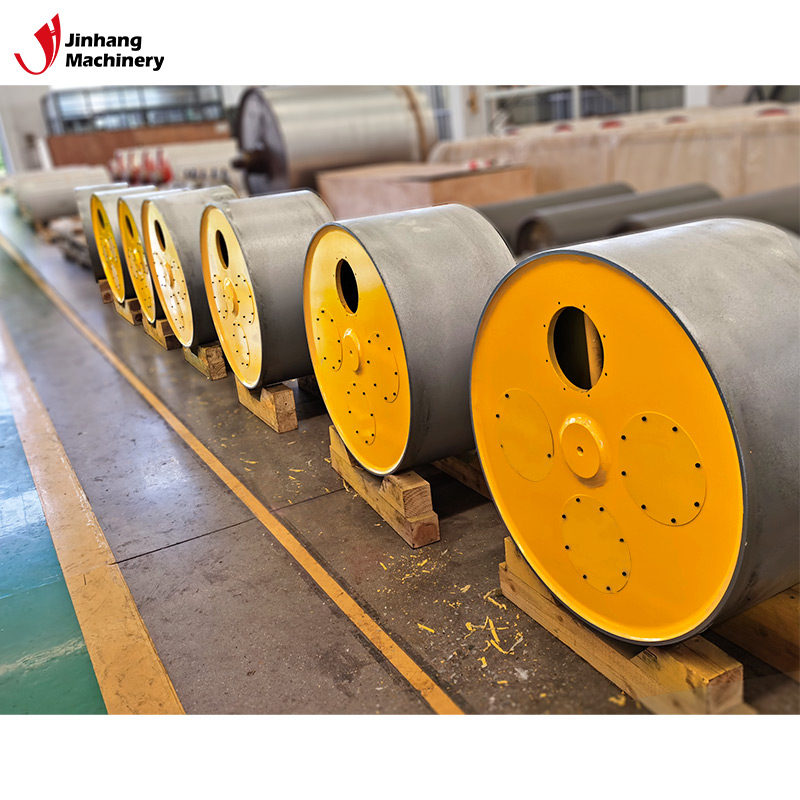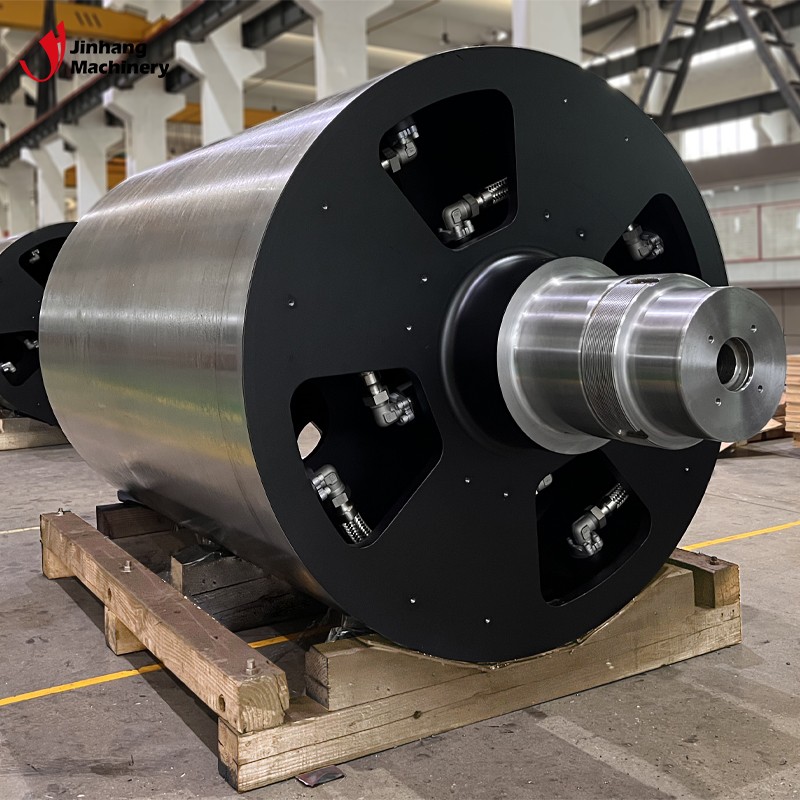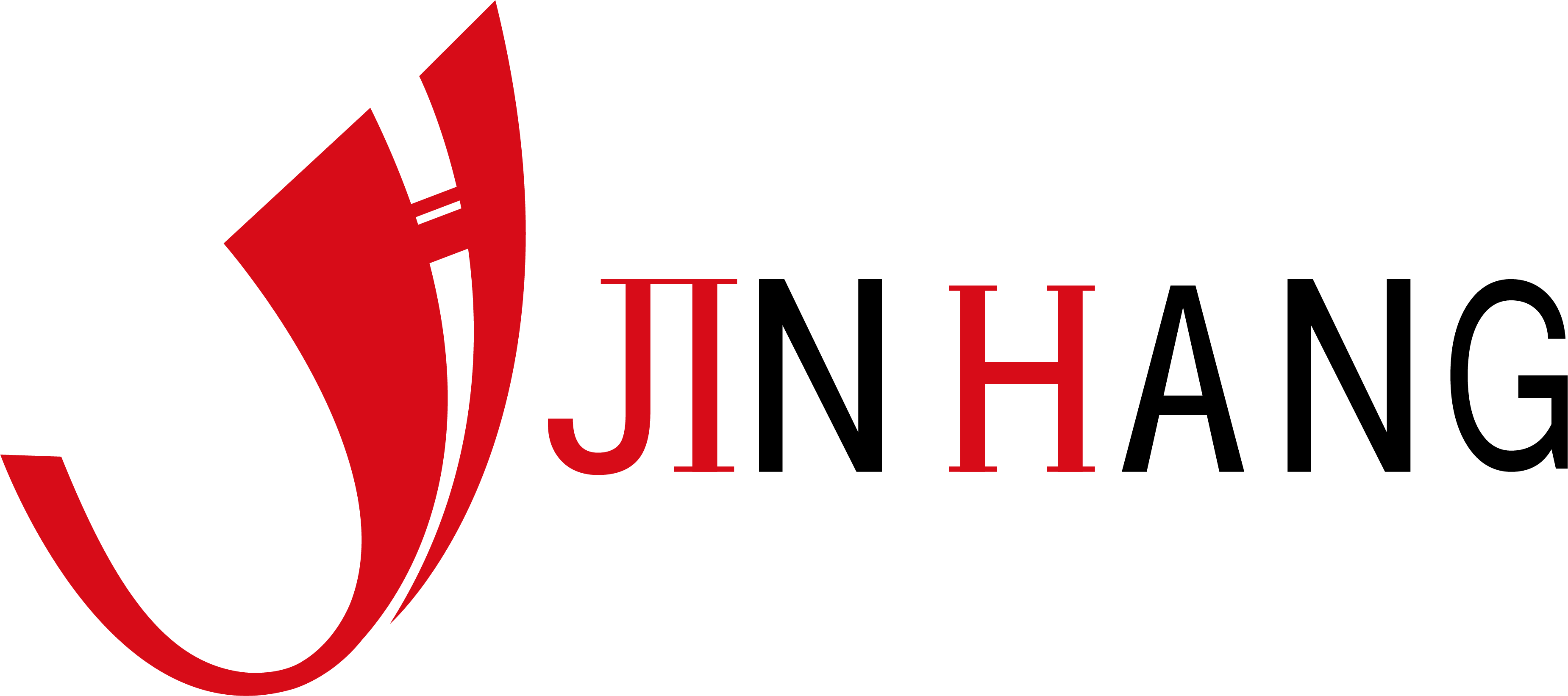Which rollers are needed in the textile industry?
In the textile industry, various types of roller equipment play an important role in the production process. These roller equipment can not only improve production efficiency, but also ensure the consistency of product quality.
This article will discuss in detail the various roller equipment used in the textile industry and their specific applications in the production process.

Which rollers are needed in the textile industry?
The 7 major rollers needed in the textile industry:
1. Guide Roller,
2. Pressure Roller,
3. Coating Roller,
4. Drying Roller,
5. Calender Roller,
6. Stenter Roller,
7. Winch Roller.

Guide Roller:
The function of the Guide Roller: The guide roller is mainly used to guide the movement of the fabric on the production line to ensure that the fabric remains stable and in the correct position during processing.
Application links of cloth guide roller in textile industry:
● Opening process: During the opening process of fabric, cloth guide roller helps the fabric to unfold smoothly to prevent wrinkles and entanglement.
● Printing and dyeing process: During the printing and dyeing process, cloth guide roller guides the fabric through the dyeing vat and printing machine to ensure the uniformity of dyeing and printing.
Pressure roller:
The role of pressure roller: The pressure roller helps the fabric to closely contact other equipment or materials during the processing process by applying a certain pressure, so as to achieve better processing effect.
Application links of pressure roller in textile industry:
● Grinding process: During the ginning process, the pressure roller applies pressure to make the dye or coating on the fabric evenly distributed, enhancing the color fastness and feel.
● Laminating process: During the laminating process, the pressure roller adheres the plastic film tightly to the surface of the fabric to ensure the flatness and firmness of the laminating.
Coating roller:
The role of coating roller: The coating roller is used to evenly apply the coating on the surface of the fabric to achieve various functional and decorative effects.
Application links of coating rollers in the textile industry:
● Coating process: During the fabric coating process, the coating roller evenly applies waterproof, fireproof, antibacterial and other functional coatings on the fabric surface to increase the added value of the fabric.
● Printing process: During the printing process, the coating roller evenly applies the printing slurry on the fabric to ensure the clarity and stability of the pattern.

Drying Roller:
Function of drying roller: The drying roller quickly dries the moisture or solvent on the fabric by heating or ventilation to improve production efficiency.
Application links of drying rollers in the textile industry:
● Dyeing process: After dyeing, the fabric needs to be dried quickly to avoid dye migration and color difference. The drying roller ensures that the fabric is dried quickly by uniform heating.
● Coating process: In the coating process, the drying roller helps the coating material to solidify quickly, improve production efficiency and product quality.
Calender Roller:
Function of calender roller: The calender roller improves the flatness and glossiness of the fabric and improves the appearance quality of the fabric through high temperature and high pressure.
Application links of rollers in the textile industry:
● Finishing process: During the fabric finishing process, the roller applies high temperature and high pressure to make the fabric surface smooth and flat, improving its appearance and feel.
● Embossing process: During the embossing process, the roller embosses the pattern on the fabric surface to increase the decorative effect and three-dimensional sense of the fabric.
Stenter Roller:
Function of stenter roller: The stenter roller is used to stretch and shape the fabric in the wide direction to ensure the dimensional stability and flatness of the fabric.
Application links of stenter rollers in the textile industry:
● Setting process: During the fabric setting process, the stenter roller stretches the fabric to the set width and sets it at high temperature to prevent the fabric from shrinking and deforming.
● Heat setting process: During the heat setting process, the stenter roller cooperates with hot air or infrared equipment to set the fabric at high temperature to improve dimensional stability and wrinkle resistance.
Winch Roller:
Function of winch roller: The winch roller is used to guide and wind the fabric for easy transportation and storage during the production process.
Application links of winch roller in textile industry:
● Dyeing process: During the dyeing process, the winch roller winds the fabric in the dye vat to ensure uniform penetration of the dye and achieve uniform dyeing effect.
● Finishing process: During the fabric finishing process, the winch roller winds the fabric together for subsequent transportation and processing.

What is the role of rollers in the textile industry?
The role of rollers in the textile industry is to improve production efficiency, ensure product quality, and increase product added value.
Improve production efficiency:
Various types of roller equipment play a vital role in the textile production line. Through guiding, pressurizing, coating, drying and other functions, the production efficiency is greatly improved. Equipment such as guide rollers and winch rollers ensure the smooth operation of fabrics on the production line and avoid production interruptions caused by wrinkles and winding. The application of pressure rollers and coating rollers ensures the rapid progress of various process processes and improves production speed and efficiency.
Ensure product quality:
The precise control ability of roller equipment is a key factor in ensuring product quality. The coating roller can evenly apply the coating on the surface of the fabric to ensure the uniformity and stability of the coating. The high temperature and high pressure treatment of the roller and the stenter roller improves the flatness and glossiness of the fabric and improves the appearance quality of the fabric. The uniform heating of the drying roller ensures the rapid drying of the fabric and avoids the problems of dye migration and color difference.
Increasing the added value of products:
By using various types of roller equipment, textiles can achieve a variety of functional and decorative processing, increasing the added value of products. The application of coating rollers makes the fabric waterproof, fireproof, antibacterial and other functions, improving the market competitiveness of the products. The application of rollers and embossing rollers makes the fabric have smooth, flat, three-dimensional and other appearance effects, increasing the beauty and uniqueness of the products.
